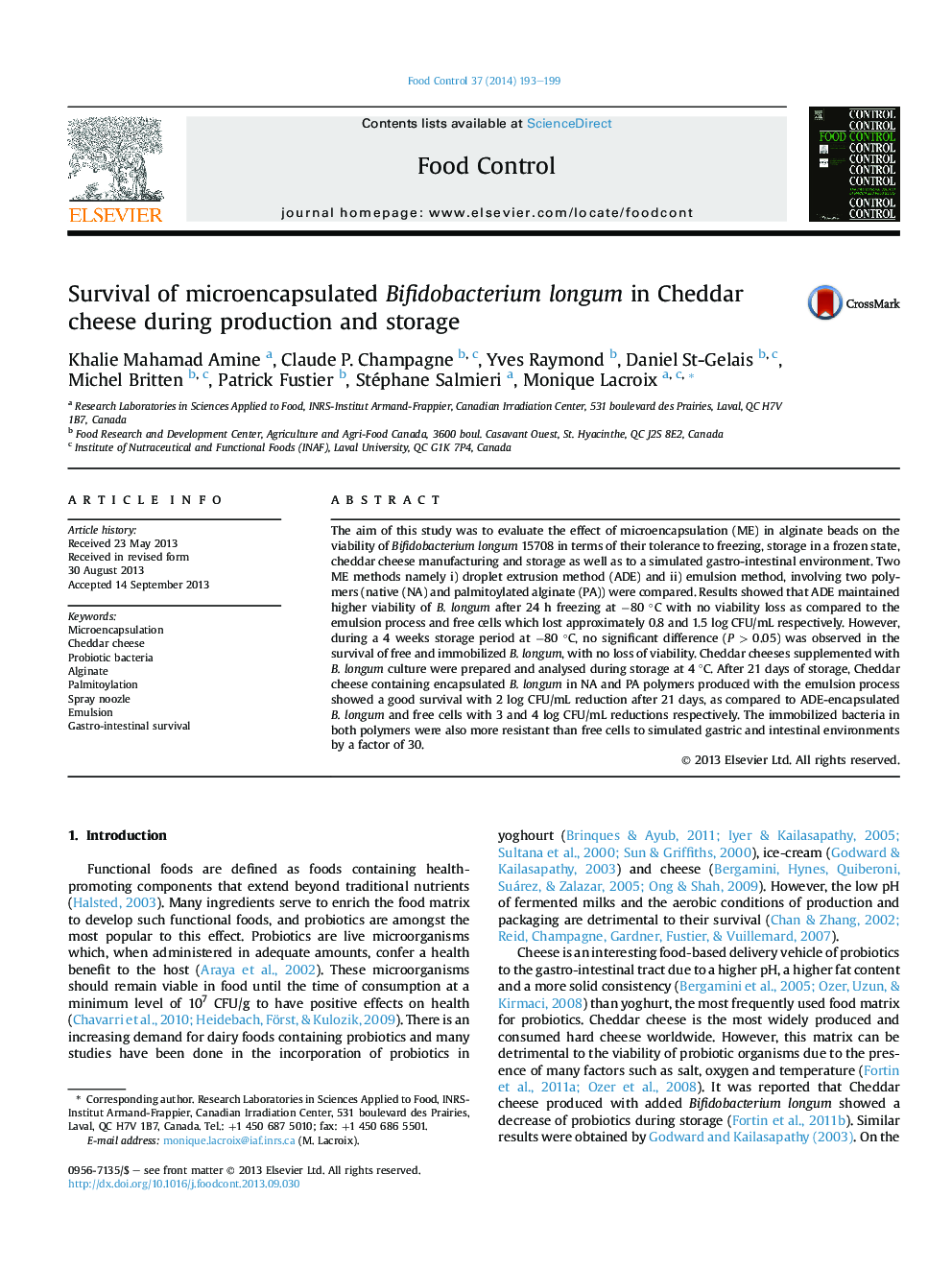| کد مقاله | کد نشریه | سال انتشار | مقاله انگلیسی | نسخه تمام متن |
|---|---|---|---|---|
| 6392210 | 1628425 | 2014 | 7 صفحه PDF | دانلود رایگان |

- Viability of encapsulated B. longum by 2 encapsulation methods was investigated.
- Beads were studied in function of 2 industrial conditions of storage.
- Stability of beads was studied in functional cheese processing.
- Encapsulation in alginate beads improved survival of B. longum to freezing.
- Encapsulation improved survival of B. longum to gastro-intestinal conditions.
The aim of this study was to evaluate the effect of microencapsulation (ME) in alginate beads on the viability of Bifidobacterium longum 15708 in terms of their tolerance to freezing, storage in a frozen state, cheddar cheese manufacturing and storage as well as to a simulated gastro-intestinal environment. Two ME methods namely i) droplet extrusion method (ADE) and ii) emulsion method, involving two polymers (native (NA) and palmitoylated alginate (PA)) were compared. Results showed that ADE maintained higher viability of B. longum after 24 h freezing at â80 °C with no viability loss as compared to the emulsion process and free cells which lost approximately 0.8 and 1.5 log CFU/mL respectively. However, during a 4 weeks storage period at â80 °C, no significant difference (P > 0.05) was observed in the survival of free and immobilized B. longum, with no loss of viability. Cheddar cheeses supplemented with B. longum culture were prepared and analysed during storage at 4 °C. After 21 days of storage, Cheddar cheese containing encapsulated B. longum in NA and PA polymers produced with the emulsion process showed a good survival with 2 log CFU/mL reduction after 21 days, as compared to ADE-encapsulated B. longum and free cells with 3 and 4 log CFU/mL reductions respectively. The immobilized bacteria in both polymers were also more resistant than free cells to simulated gastric and intestinal environments by a factor of 30.
Journal: Food Control - Volume 37, March 2014, Pages 193-199